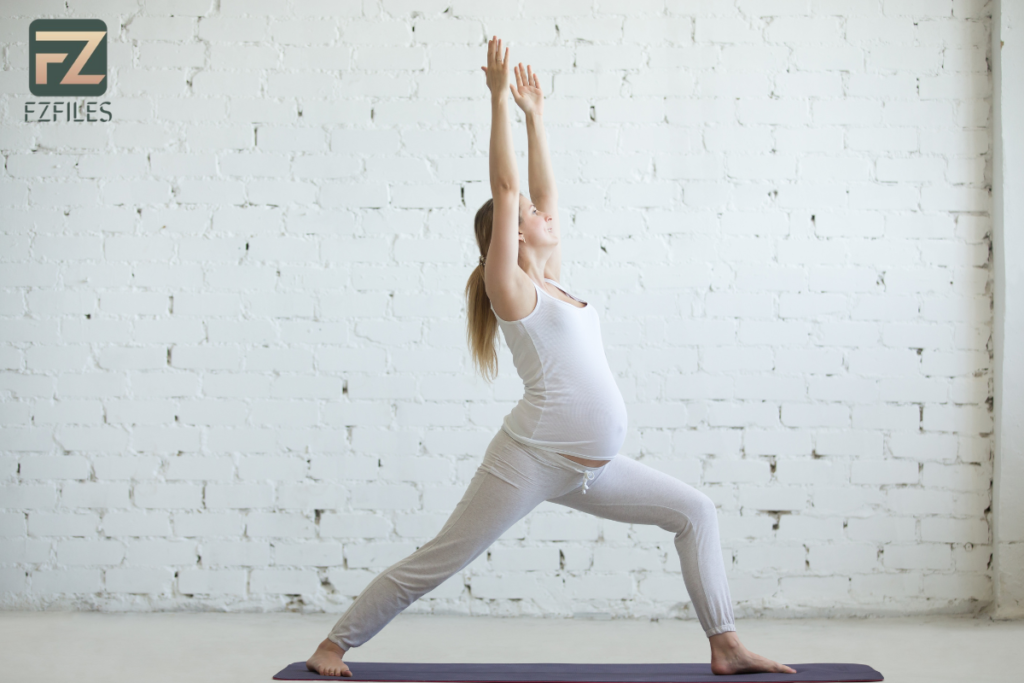Introduction to Prenatal Yoga
Prenatal yoga is a specialized form of yoga designed to support expecting mothers through the physical and emotional changes of pregnancy. Combining gentle stretches, breathing exercises, and mindfulness techniques, prenatal yoga provides a holistic approach to maintaining health and well-being during pregnancy. In this comprehensive guide, we will explore the benefits of prenatal yoga, safe poses for each trimester, and tips for creating an effective prenatal yoga routine.
Benefits of Yoga During Pregnancy
Physical Benefits
Prenatal yoga offers numerous physical benefits that can help ease common pregnancy discomforts and prepare the body for childbirth.
- Improved Flexibility: Gentle stretching helps maintain and improve flexibility, making it easier to cope with the physical changes of pregnancy.
- Strengthened Muscles: Prenatal yoga strengthens key muscle groups, including the pelvic floor, which plays a crucial role during labor and delivery.
- Reduced Pain: Yoga can alleviate common pregnancy aches and pains, such as lower back pain and sciatica.
- Better Circulation: The gentle movements of yoga improve blood circulation, reducing swelling and promoting overall cardiovascular health.
Emotional and Mental Benefits
Prenatal yoga also supports mental and emotional well-being, providing tools to manage stress and anxiety.
- Stress Relief: Yoga promotes relaxation through deep breathing and mindfulness, reducing stress levels.
- Enhanced Mood: Regular practice can boost mood and help combat prenatal depression.
- Improved Sleep: Yoga techniques can enhance the quality of sleep, addressing common issues like insomnia.
- Increased Connection: Prenatal yoga fosters a deeper connection between the mother and her developing baby.
Safe Yoga Poses for Each Trimester
First Trimester Poses
During the first trimester, it’s essential to focus on gentle movements and avoid any poses that involve lying on the stomach or deep twisting.
- Cat-Cow Pose (Marjaryasana-Bitilasana): This pose gently warms up the spine and relieves tension in the back.
- Mountain Pose (Tadasana): A grounding pose that promotes stability and balance.
- Bound Angle Pose (Baddha Konasana): Opens the hips and groin, which is beneficial as the body prepares for childbirth.
- Child’s Pose (Balasana): Provides a restful stretch for the back, hips, and thighs.
Second Trimester Poses
The second trimester often brings more energy, making it an ideal time to focus on building strength and flexibility.

- Warrior II (Virabhadrasana II): Fortifies the legs and further develops balance.
- Triangle Pose (Trikonasana): Enhances flexibility in the legs and hips while opening the chest.
- Extended Side Angle Pose (Utthita Parsvakonasana): Stretches the side body and improves strength.
- Legs-Up-the-Wall Pose (Viparita Karani): Relieves tired legs and reduces swelling.
Third Trimester Poses
In the third trimester, the focus shifts to preparing for labor and maintaining comfort.
- Squatting Pose (Malasana): Opens the hips and strengthens the pelvic floor.
- Pigeon Pose (Eka Pada Rajakapotasana): Stretches the hips and relieves tension in the lower back.
- Seated Forward Bend (Paschimottanasana): Gently stretch the back and legs.
- Corpse Pose (Savasana) with Props: Promotes relaxation and stress relief using props for support.
Creating a Prenatal Yoga Routine
Assess Your Needs
Before beginning a prenatal yoga routine, it’s important to assess your individual needs and consult with your healthcare provider. Consider any pre-existing conditions, your fitness level, and how your pregnancy progresses.
Warm-Up and Cool Down
Start each session with a gentle warm-up to prepare your body for the poses and end with a cool-down to help your body relax. A typical warm-up might include gentle stretching and breathing exercises, while the cool-down could involve restorative poses and meditation.
Focus on Breath
Breathing exercises (pranayama) are a key component of prenatal yoga. Practice deep, mindful breathing to help manage stress and improve oxygen flow to your baby. Techniques such as Ujjayi breath can be particularly beneficial.
Stay Hydrated
Pregnancy increases the body’s need for water, so be sure to stay hydrated during your yoga practice. Keep a water bottle close by and accept tastes on a case-by-case basis.
Listen to Your Body
Focus on your body’s signs and try not to propel yourself excessively hard. If a pose feels uncomfortable or causes pain, modify it or skip it altogether. Focusing on your solace and safety is fundamental.
Use Props
Props such as yoga blocks, bolsters, and straps can provide additional support and make poses more accessible. Don’t hesitate to use them to enhance your practice.
Expert Tips for Practicing Prenatal Yoga
Find a Qualified Instructor
Look for a yoga instructor who is experienced in teaching prenatal yoga. A qualified instructor can guide you safely through poses and modifications that are appropriate for each stage of pregnancy.
Join a Prenatal Yoga Class
Consider joining a prenatal yoga class to connect with other expecting mothers and receive personalized guidance. Group classes can provide a supportive community and enhance your yoga experience.
Practice Mindfulness
Incorporate mindfulness into your yoga practice by focusing on the present moment and your connection with your baby. Mindfulness can enhance the emotional benefits of yoga and help you stay attuned to your body’s needs.
Be Consistent
Consistency is vital to receiving the rewards of pre-birth yoga. Aim to practice regularly, even if it’s just a few minutes each day. Regular practice can help you build strength, flexibility, and mental resilience.
Modify As Needed
As your pregnancy progresses, you may need to modify poses to accommodate your growing belly and changing body. Don’t be afraid to adjust your practice to ensure comfort and safety.
Focus on Relaxation
Incorporate relaxation techniques such as guided meditation, visualization, and Savasana (Corpse Pose) into your routine. These methods can assist with decreasing pressure and advance a feeling of quiet.
Conclusion
Prenatal yoga is a powerful tool for supporting your physical and emotional well-being during pregnancy. By incorporating safe and effective poses into your routine, you can enjoy the many benefits of yoga and prepare your body for childbirth. Remember to listen to your body, stay hydrated, and seek guidance from qualified instructors.

[…] provide significant advantages. In this comprehensive guide, we’ll explore the benefits of yoga for athletes, essential poses, and how to create an effective athletic yoga routine tailored to […]